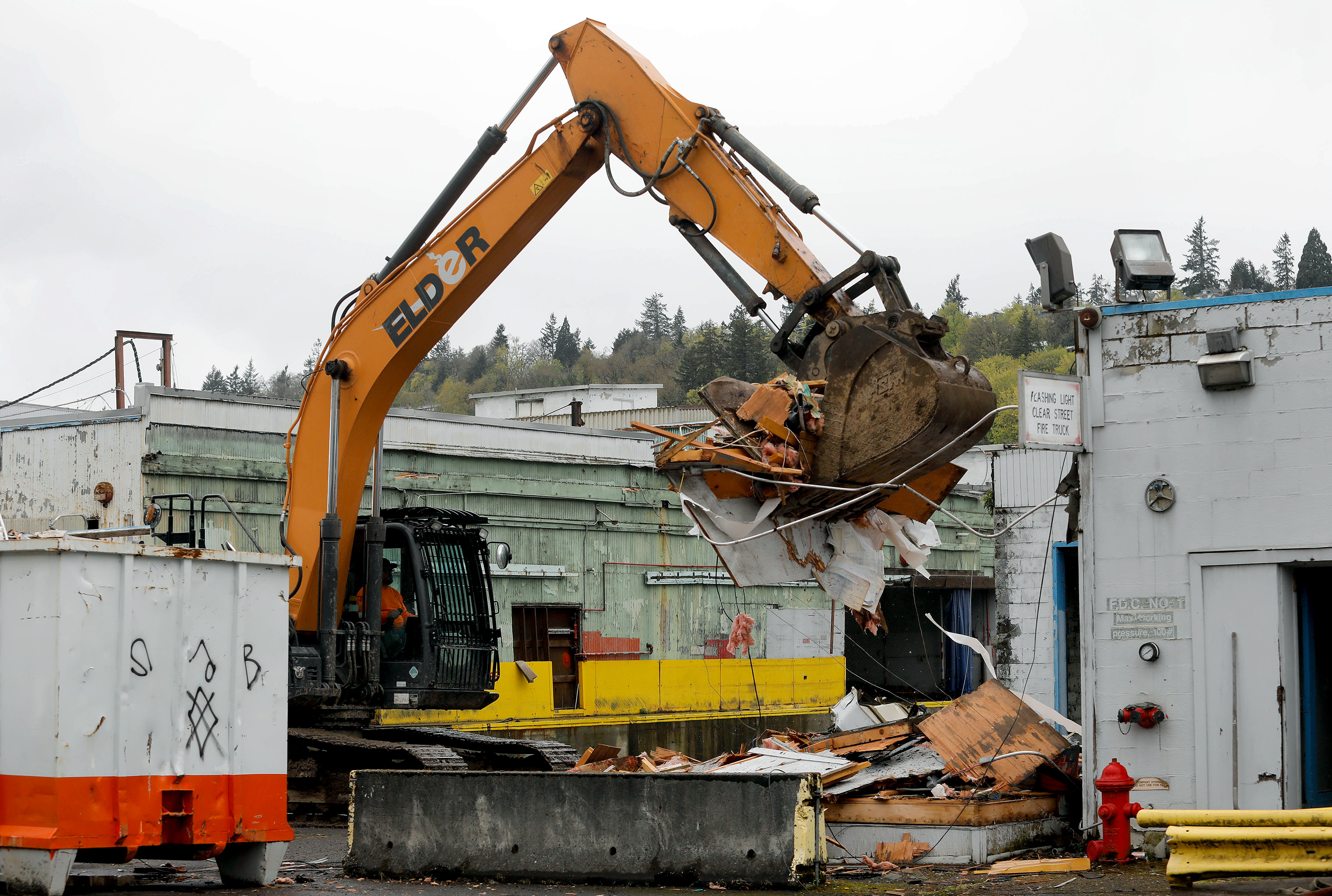Tribal Government & News
Tumwata Village property cleanup efforts continue

By Danielle Harrison
Smoke Signals editor
Environmental cleanup efforts continue at the Tribe’s Tumwata Village property in Oregon City with the help of an $800,000 EPA Multipurpose Brownfield Grant.
Tribal Engineering and Planning Manager Ryan Webb updated the membership on the cleanup efforts during a 38-minute virtual meeting held Tuesday, Nov. 28.
He was joined by Historic Preservation Manager Briece Edwards and Community Development Department Manager Kristen Svicarovich.
Edwards shared the history of the site, formerly known as the Blue Heron property, describing it as a “sacred cultural, fishing and gathering place for people whose descendants became the Confederated Tribes of Grand Ronde.”
“We are talking about a place that has an ikanum, a point of origin,” he said.
The site was home to the Charcowah village of the Clowewalla (Willamette band of Tumwaters) and the Kosh-huk-shix village of Clackamas people, who were both forcibly removed from Willamette Falls and relocated to the Grand Ronde Reservation in the 1850s.
“Those initial values of lifeways and investment in stewardship are being brought back to this property,” Edwards said. “For stewardship, we are going to make sure that there is the importance of healing and bringing those early values of stewardship and abundance back into place.”
Since purchasing the property for $15.25 million in August 2019, the Tribe released its vision statement for the site in March 2021, started environmental remediation, launched the first phase of building demolition in September 2021, secured federal support by obtaining the $800,000 EPA grant in May 2021 and $2 million in federal funding included in the appropriations bill signed into law in March 2022, and started a third round of demolition work in March of this year. The Tribe also renamed the site Tumwata Village after the Native word for Willamette Falls.
“For people who aren't familiar, that waterfall is the second largest waterfall in North America by width and volume, so it's really truly amazing that we've got something so special really nestled there,” Webb said.
The 23-acre site has been used for numerous industrial purposes since the 19th century and included more than 50 buildings before demolition work began. Currently, 30 buildings remain on the site.
“The Tribe is continuing to strategically demo the buildings, which will provide flexibility for economic development, access to the river, habitat restoration and cultural and historic interpretation, helping us to heal and restore the site,” Webb said. “We are taking down some of those old structures and this grant provides flexibility when it comes to cleanup work and planning activities. The Tribe will focus the funding on subsurface investigation work (to look for contamination) with potentially some cleanup work as well. … Anybody who has ever been involved with a brownfield site and the remediation work understands that it is an expensive business to clean up some of these sites. This grant is a large sum of money, but the fact that it gives us the flexibility to also help clean up the areas of contamination that we find is truly a fantastic opportunity and the Tribe is very grateful. … The grant will help the Tribe to continue to heal and restore the site, after generations of neglect.”
While discussing rehabilitation work, Webb noted that the Tribe has occasionally been surprised by what has been found, including two buried railroad tankers that were being used as underground storage tanks.
There had long been rumors of a locomotive buried onsite, he added.
“For whatever reason they wanted to use railroad tankers for storage,” Webb said. “But we're hoping that we solved the myth of a locomotive when in fact, it was these two railroad tankers that were buried in the ground and used as underground storage tanks.”
Svicarovich shared the Tribe’s vision for the site, which focuses on environmental restoration, mixed-use development, strengthening Grand Ronde’s connection to its homelands, assuring cultural access by Tribal members to the falls and allowing for public access.
“The Tribe's vision really balances both environmental restoration and then also thoughtful mixed-use redevelopment on site,” she said. “The key is to help facilitate Tribal member access to the falls and also restore public access throughout the site. … There's also a desire to have public open spaces on site, so that the Tribe can be hosts to people visiting visiting our site.”
For more information about the Tumwata Village project, visit tumwatavillage.org.
